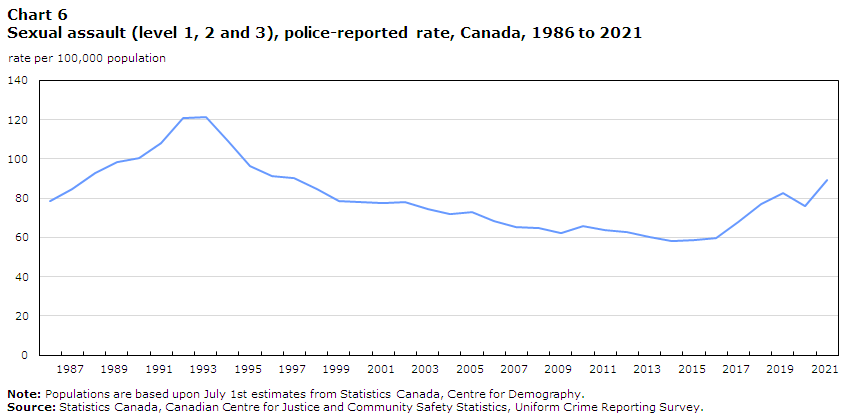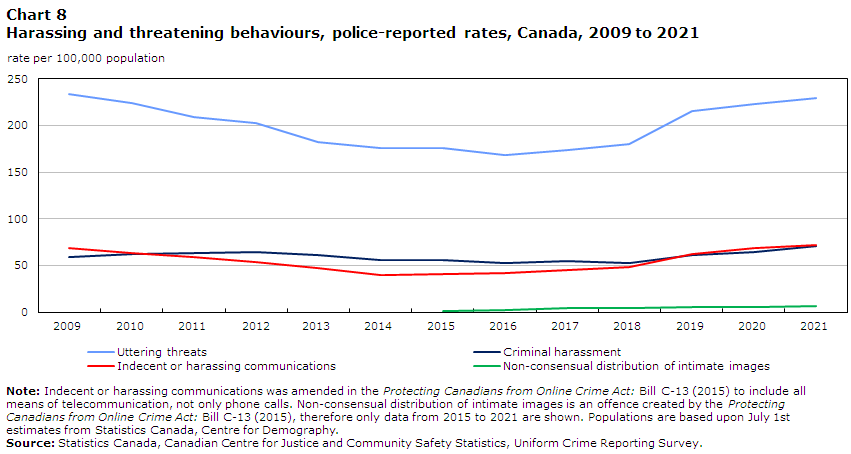COVID pandemic ‘exposed and exacerbated’ discrimination in Canada: Statistics Canada
Posted Aug 3, 2022 9:41 am.
Last Updated Aug 3, 2022 9:55 am.
The COVID-19 pandemic killed tens of thousands of Canadians, made millions of us sick, and changed the way we live, work, and interact.
According to Statistics Canada it may have also shaped significant shifts in criminal behaviour.
In its police-reported crime statistics for 2021 released on Tuesday, the government agency notes a marked increase in hate crimes since the pandemic started.
“The pandemic further exposed and exacerbated issues related to safety and discrimination in Canada, including hate crime,” the report states.
“Racialized groups were more than twice as likely to report having experienced discrimination since the beginning of the pandemic, compared with the rest of the population. This difference was more pronounced than in the five years preceding the pandemic.”
Over the last two years, StatCan says police-reported hate crimes have increased by a disturbing 72 per cent.
Overall, Black and Jewish people were victims of the most reported hate crimes.
“We are deeply concerned that incidents of hate crime rose yet again in Canada in 2021,” Shimon Koffler Fogel, president and CEO of the Centre for Israel and Jewish Affairs (CIJA), said in a release.
“Statistically, Canadian Jews were more than 10 times more likely than any other Canadian religious minority to report being the target of a hate crime. This is alarming,” said Fogel. “… these numbers should concern all Canadians. One hate crime is one too many.”
Hate crimes targeting sexual orientation also jumped significantly in 2021 — up by 64 per cent. “About 8 in 10 (77 per cent) of these crimes specifically targeted the gay and lesbian community,” the report said.
Spike in violent crimes
StatCan says the violent crime severity index (CSI) rose by five per cent in 2021 and was higher than in 2019 prior to the pandemic, largely because of a spike in level 1 sex assaults.
“The rise in level 1 sexual assault accounted for 40 per cent of the increase in the Violent CSI.”
The government defines level 1 as an “assault of a sexual nature that violates the sexual integrity of the victim.”
But those numbers may not tell the whole story. “Pandemic-related lockdown conditions, particularly in the first year of the pandemic, could have exacerbated the underreporting of sexual assaults,” the report adds.

StatCan also says the ongoing healthcare worker shortage could have led to fewer victims of sexual assault coming forward.
“With widespread stay-at-home orders and overburdened hospital and medical care resources, it may have been more difficult for victims to come forward to report instances of sexual assault …”
RELATED: Ontario healthcare system on life support: Why are ER wait times so long?
At the same time, non-violent crimes, like property and drug offences dropped by three per cent after falling nine per cent in 2020.
StatCan called it a “notable shift.”
“For the first time since 2006, the year-over-year changes in the Violent and Non-Violent CSIs moved in opposite directions. These shifts provide important insight into the way in which crime in Canada changed following the onset of the pandemic.”
More time online a factor in harassment spike?
Internet usage spiked during the pandemic, and the report says that may have played a role in an increase in police-reported cases of harassment and threatening behaviours.
“Increased access to and use of the Internet and social media, and the perceived anonymity they offer, can facilitate criminal harassment, uttering threats, and indecent and harassing behaviours.
“Moreover, these behaviours may be exacerbated by the increasing use of the Internet to socialize and interact during the pandemic.”









